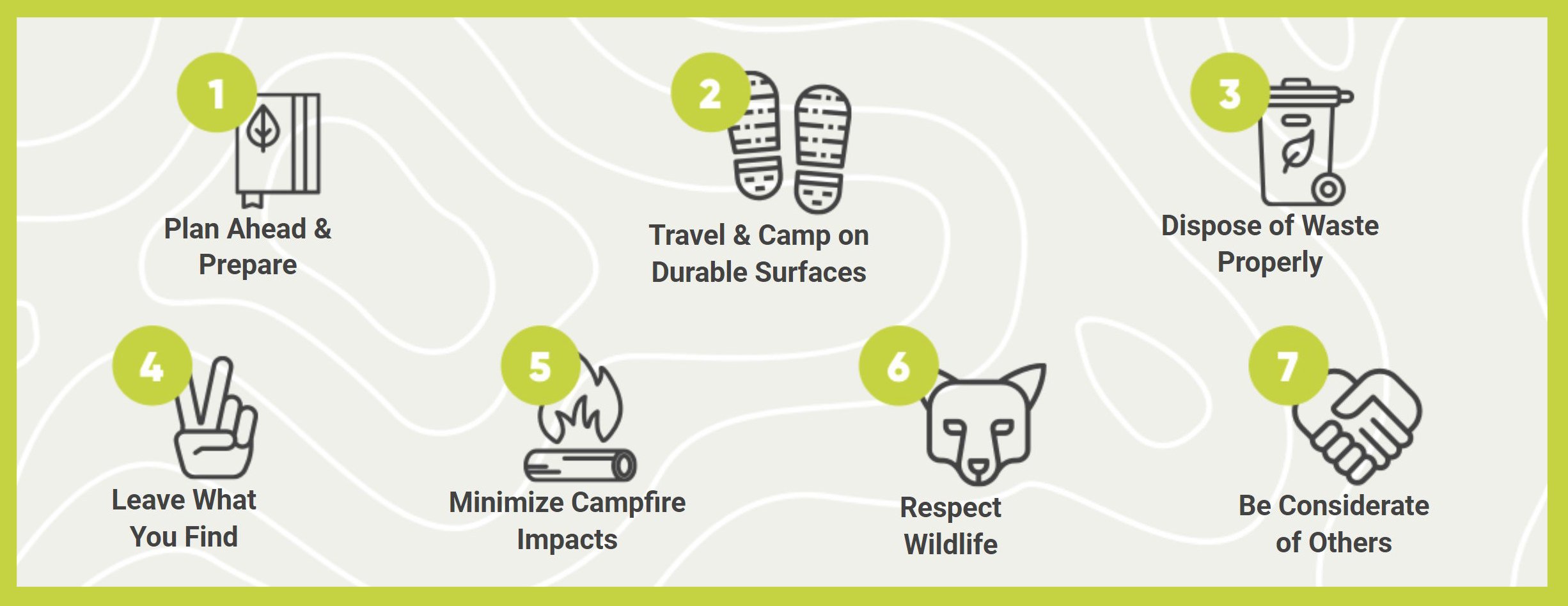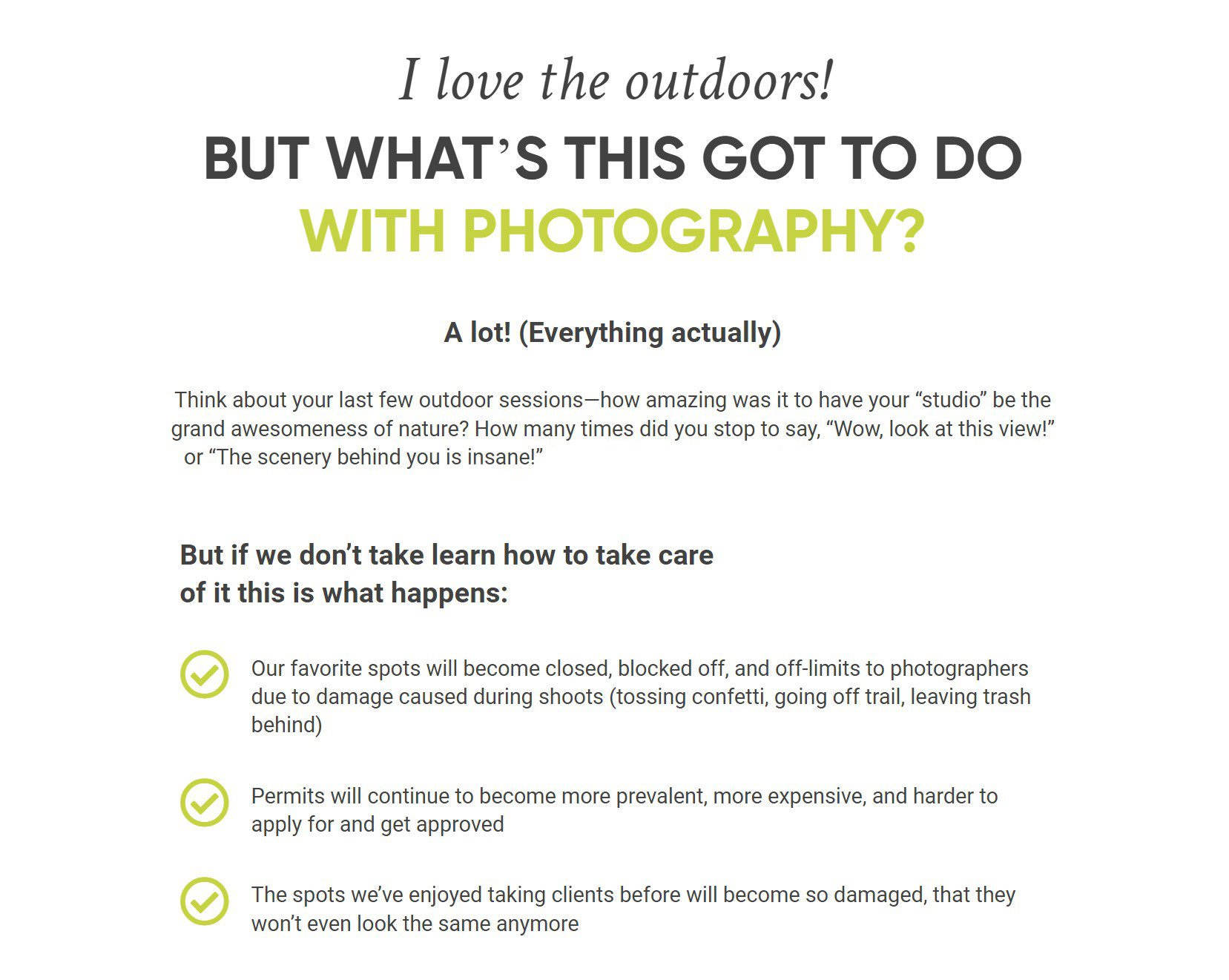As a portrait photographer, I capture a significant number of my sessions in open-air settings, involving both clients and individuals who might possess varying levels of familiarity with outdoor survival techniques and safety precautions.
Promoting the significance of learning and spreading awareness about respecting our surroundings holds great value. This includes activities such as cleaning up litter, adhering to safety guidelines, and being ready for interactions with wildlife. For those engaged in on-site, outdoor, or wildlife photography, as well as individuals who appreciate nature, I have an excellent resource to offer. This resource is aimed at assisting everyone in enhancing their environmental stewardship.
What is Leave No Trace?
Leave No Trace is an amazing non-profit organization dedicated to educating people all about how to recreate responsibly outdoors! Their mission is to protect the outdoors by teaching & inspiring people to enjoy it responsibly. LNT has a set of 7 principles that are designed to help people make safe & responsible decisions while they’re in the great outdoors.
There are countless photographers who have gone out into remote areas & been unaware of the risks associated with being unprepared for intense weather, not having the proper supplies on hand, etc. Many new photographers have accidentally put themselves & their clients into unsafe situations outdoors due to a lack of awareness & preparation.
Below are 7 Safety & Ethics Principles that are absolutely essential to keep in mind whenever you are outdoors:
The 7 Principles of Leave No Trace

- Plan Ahead & Prepare: Whenever you are out in nature, it’s deeply important to be as prepared as possible. That means understanding rules, regulations & permit requirements for the area you are visiting, staying aware of weather patterns, bringing along food & water, wearing appropriate clothing, & being aware of your own physical abilities.
- Travel & Camp on Durable Surfaces: If you do go off-trail while outdoors, walking on surfaces such as sand, gravel, or rocks is considered best because of their durability. We want to be careful not to trample plants or other fragile surfaces.
- Dispose of Waste Properly: Simple & straightforward – don’t leave any trash or debris anywhere in the outdoors. Pack it in, pack it out!
- Leave What You Find: While it is tempting, resist picking flowers or taking home a pocketful of rocks from outdoor areas. Many items like certain endangered plants, raptor feathers, & other geological features are protected federally or by the state & it is actually considered illegal to take home pieces from certain sites.
- Minimize Campfire Impacts: It is deeply important to be aware of fire danger – thoroughly extinguish all campfires & be sure to build them in a safe place where there is no danger of the fire spreading due to wind, nearby brush, etc.
- Respect Wildlife: Never feed wildlife & always observe from a respectful distance! Wildlife can startle easily & it is not safe to try & use them as a photo-op.
- Be Considerate of Other Visitors: The outdoors is for everyone to enjoy, & this means it’s important to be aware of how your presence may be impacting other visitors. Share the trail, keep music at a low volume, & allow everyone their space.
Why Is Leave No Trace Important?
After noticing increased impacts on trails, the US Forest Service developed the Seven Principles of Leave No Trace in the 1960’s. The idea behind the principles was to leave nature as unchanged by human presence as possible, so that future generations can enjoy our outdoor spaces too. In essence, the purpose of Leave No Trace is to keep the wilderness wild.
With the rise of social media, many beautiful outdoor areas have unfortunately become completely over-run by people who are not being conscious of their impact on the space. Certain wilderness areas that were once accessible have now become highly regulated or even fully shut down to the public due to the high number of people trampling plants, leaving trash, destroying the terrain, etc.
With the rise of social media, many beautiful outdoor areas have unfortunately become completely over-run by people who are not being conscious of their impact on the space. Certain wilderness areas that were once accessible have now become highly regulated or even fully shut down to the public due to the high number of people trampling plants, leaving trash, destroying the terrain, etc.
Leave No Trace + Rebekah Heffington Photography
I consider myself extremely fortunate to have been raised in an environment where I received early and comprehensive education in outdoor safety and the value of nature. Unfortunately, not everyone has had the chance to gain such knowledge from their families or communities. I’ve been truly privileged to have the opportunity to travel extensively throughout my life, and this has fostered a profound bond with natural landscapes. My initial experiences in photography involved capturing images of mountains, flowers, and wildlife. Throughout my journey, I’ve been fortunate to receive guidance from numerous individuals on how to coexist with nature mindfully and respectfully.
Leave No Trace has a variety of classes & resources available online to help educate anyone about how to be more responsible outdoors! I have personally taken one of their classes that is geared toward Photographers, & it is so encouraging to know that there is a community of people out there like me who are dedicated to educating themselves & their clients about outdoor safety.
If you are interested in learning more about this organization, visit their website at LNT.org to view the variety of resources they have available. Always feel free to reach out to me with any questions you may have about the course for Photographers as well. Here’s to finding new ways every day to educate ourselves & to take better care of the environment!
Want to learn more about LEAVE NO TRACE?
Click the buttons below to visit the LNT website & learn more about the special program created for Photographers. The LNT for Photographers course is geared mostly towards outdoor Wedding and Elopement Photographers, but it is completely applicable for any Photographer who has sessions outdoors & in remote wilderness areas.

